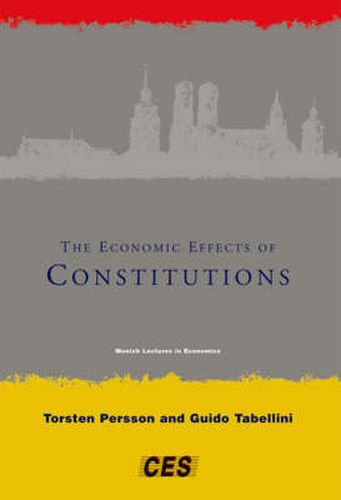Readings Newsletter
Become a Readings Member to make your shopping experience even easier.
Sign in or sign up for free!
You’re not far away from qualifying for FREE standard shipping within Australia
You’ve qualified for FREE standard shipping within Australia
The cart is loading…






The authors of The Economic Effects of Constitutions use econometric tools to study what they call the missing link between constitutional systems and economic policy; the book is an uncompromisingly empirical sequel to their previous theoretical analysis of economic policy, Political Economics. Their findings are based on comparisons of political institutions across countries or time, in a large sample of contemporary democracies. They find that presidential/parliamentary and majoritarian/proportional dichotomies influence several economic variables: presidential regimes induce smaller public sectors, and proportional elections lead to greater and less targeted government spending and larger budget deficits. Moreover, the details of the electoral system (such as district magnitude and ballot structure) influence corruption and structural policies toward economic growth. Persson and Tabellini’s study is important not only in its findings but also in establishing a methodology for empirical analysis in the field of comparative politics.
$9.00 standard shipping within Australia
FREE standard shipping within Australia for orders over $100.00
Express & International shipping calculated at checkout
The authors of The Economic Effects of Constitutions use econometric tools to study what they call the missing link between constitutional systems and economic policy; the book is an uncompromisingly empirical sequel to their previous theoretical analysis of economic policy, Political Economics. Their findings are based on comparisons of political institutions across countries or time, in a large sample of contemporary democracies. They find that presidential/parliamentary and majoritarian/proportional dichotomies influence several economic variables: presidential regimes induce smaller public sectors, and proportional elections lead to greater and less targeted government spending and larger budget deficits. Moreover, the details of the electoral system (such as district magnitude and ballot structure) influence corruption and structural policies toward economic growth. Persson and Tabellini’s study is important not only in its findings but also in establishing a methodology for empirical analysis in the field of comparative politics.